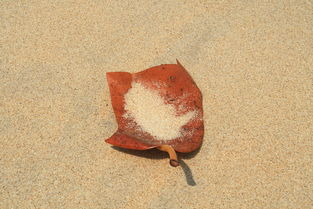Sand Mould: A Comprehensive Guide
Have you ever wondered about the intricate process of creating sand moulds? These are not just any ordinary sand; they are the foundation of many metal casting processes. In this article, we will delve into the various aspects of sand moulds, from their history to their applications in modern manufacturing.
History of Sand Moulding

The art of sand moulding dates back thousands of years. It was first used by the ancient Egyptians and Chinese for casting bronze and other metals. Over time, the technique has evolved, and today, it remains a crucial part of the metal casting industry.
Types of Sand Moulds

There are several types of sand moulds, each with its unique characteristics and applications. Here are some of the most common ones:
| Type of Sand Mould | Description | Applications |
|---|---|---|
| Green Sand Mould | Composed of sand, clay, and water. The clay acts as a binder, making the sand more durable. | Used for casting large and complex parts. |
| Core Sand Mould | Used to create internal cavities in the casting. These are often used in conjunction with other types of sand moulds. | Used in the production of intricate parts with internal features. |
| Shell Mould | Composed of a mixture of sand and resin. This type of mould is known for its high precision and durability. | Used for casting small, intricate parts with high dimensional accuracy. |
Process of Creating Sand Moulds

The process of creating sand moulds involves several steps, including:
-
Pattern Making: A pattern is created to represent the shape of the final casting. This pattern is usually made of wood, metal, or plastic.
-
Box Making: A box is constructed around the pattern using sand. The box is then split into two halves, creating the two halves of the sand mould.
-
Box Filling: The sand is packed into the box, and the pattern is removed. The sand is then compacted to ensure it holds its shape during the casting process.
-
Core Making: If the casting requires internal cavities, cores are made using a similar process to sand moulds.
-
Mould Assembly: The two halves of the sand mould are assembled, and the cores are placed in their respective positions.
-
Charging: Molten metal is poured into the sand mould, where it solidifies to form the final casting.
-
Mould Breakout: Once the casting has solidified, the sand mould is broken away, revealing the finished part.
Advantages of Sand Moulding
Sand moulding offers several advantages over other casting methods:
-
Cost-Effective: Sand moulding is a relatively inexpensive casting method, making it suitable for both small and large production runs.
-
High Flexibility: Sand can be used to create almost any shape, making it ideal for casting complex parts.
-
High Precision: With advancements in technology, sand moulding can produce castings with high dimensional accuracy.
-
Environmental Friendly: Sand is a renewable resource, and the process can be easily modified to minimize waste and emissions.
Applications of Sand Moulding
Sand moulding is used in a wide range of industries, including:
-
Automotive: Casting engine blocks, cylinder heads, and other components.
-
Aerospace: Producing aircraft components, such as landing gear and engine parts.
-
Construction: Casting structural components, such as beams and columns.
-
Medical: Producing orthopedic implants and other medical devices.
In










